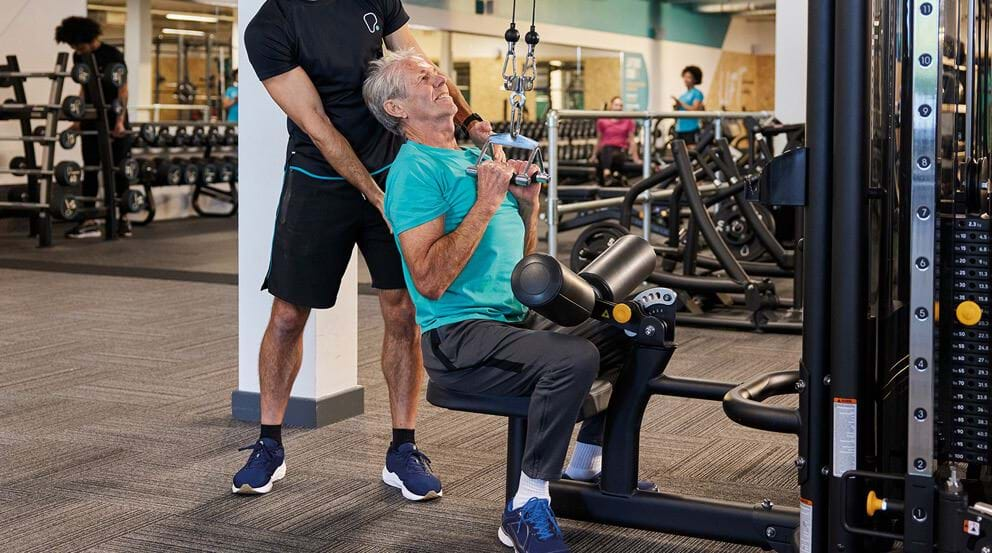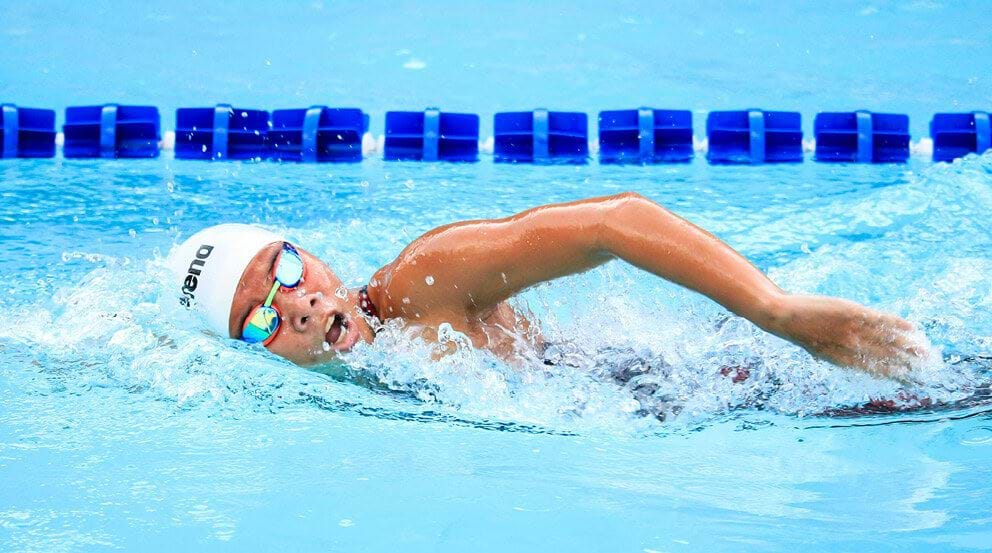5 of The Best Balance Exercises For Seniors
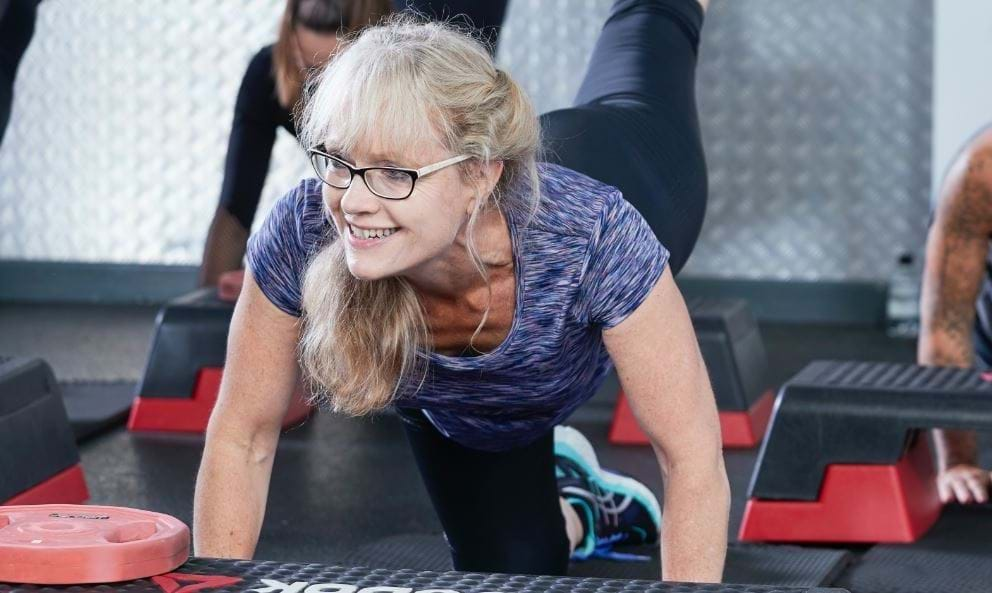
Having good balance allows you to control and maintain the position of your body through a range of motion and activities. It's a subconscious process, and as a result it's something many people take for granted.
Balance is a key component of fitness and something that everyone can work on, but for seniors, doing balance exercises is even more important. As we get older, our balance deteriorates, which makes carrying out daily activities like walking and shopping more difficult. It also means elderly individuals have a higher risk of falling. Almost a third of people aged 65 and above fall at least once a year, increasing to half of those aged 80 and above [1]. While falls are dangerous for anyone, seniors are at higher risk of fractures due to decreased bone density or osteoporosis which can occur in old age. Even for those not seriously injured, falls can shake confidence and affect their sense of independence.
Fortunately, balance is a skill that can be developed and improved with dedicated balance exercises. PureGym PT Yvonne Heiden and PT Marina Muraskin have shared some exercises that seniors can do to help improve their balance, including a video demonstration.
Exercises to specifically improve or maintain balance can both reduce the risk of falling and also minimise damage in the event a fall does occur, as the improved balance allow seniors to fall in such a way that prevents more serious injuries such as broken bones, joint or head injuries.
Download our PDF for printable balance exercises for seniors with pictures, or read on for balance exercises.
How do we keep our balance?
Maintaining balance isn't something we consciously think about, but our bodies have a very complex system in place to help keep us stable:
The body receives sensory input from your eyes; skin, muscle and joints (known as proprioception); and the vestibular system in the inner ear (which senses motion, equilibrium, and spatial orientation).
The brain organises and integrates this sensory information.
The brain then sends impulses to the muscles to maintain balance.
This a very brief overview of how balance works; if you're interested in more in-depth information on this, non-profit organisation Vestibular has a great article here.
As we get older, our ability to balance deteriorates [2]. It's difficult to determine an exact cause for this as there are several factors that can contribute to poorer balance. Age can lead to issues across the whole balance system, including impaired sensory input, slower brain processing which slows down balance responses, and reduced bone and muscle mass [3], which can lead to reduced motor control in response to balance issues.
Exercises to improve balance for seniors
The following exercises by Yvonne can be used by anyone but are especially helpful in improving balance for seniors. They're beginner focused, so don't worry if you haven't exercised in a while! I recommend doing these at least twice a week, but you can do them more often. As your balance improves, you can move on to more difficult exercises. I also recommend adding in resistance training if you don't already, as this help to increase muscle mass and bone density.
1. Single Limb Stance
For this exercise, set up near something you can hold on to, such as a chair, table, or kitchen worktop. As your balance improves, you can progress to doing this exercise without assistance.
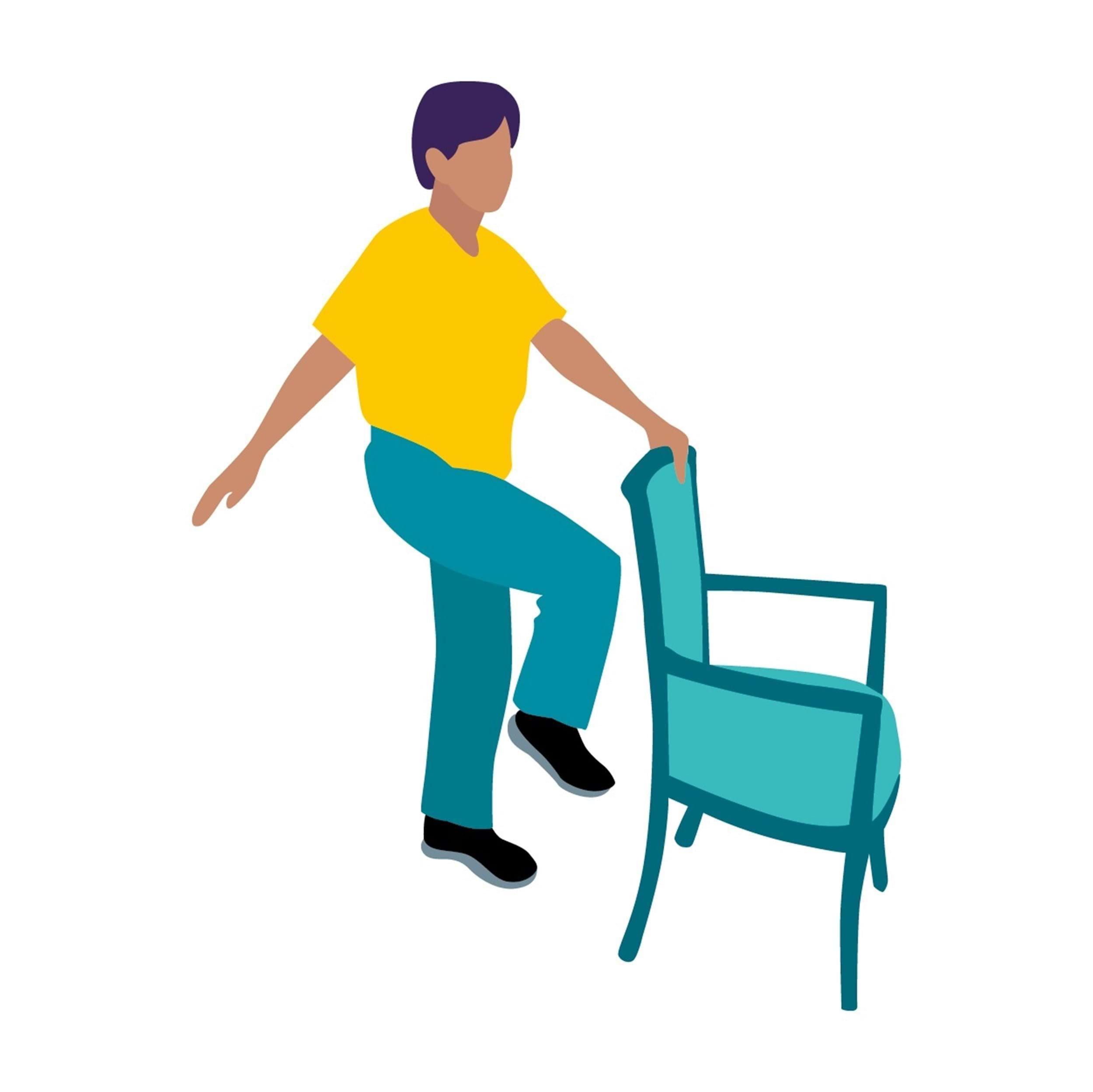
- Stand with your feet hip width apart, arms by your sides, looking straight forward.
- Soften your left knee and lift your foot so it is completely off the ground, so you are balancing your weight on your right leg. Make sure to hold your weight straight over your ankles.
- Hold your foot around ankle height for 10 seconds before switching to the other leg.
- Start with 3 lots of 10 second repetitions each side, and work your way up each week until each rep is 1 minute.
2. Clock Reach
For this exercise, imagine that you are stood in the centre of a clock; 12 o'clock is directly in front of you, 3 and 9 o'clock is to your sides, and 6 o'clock is to your back.
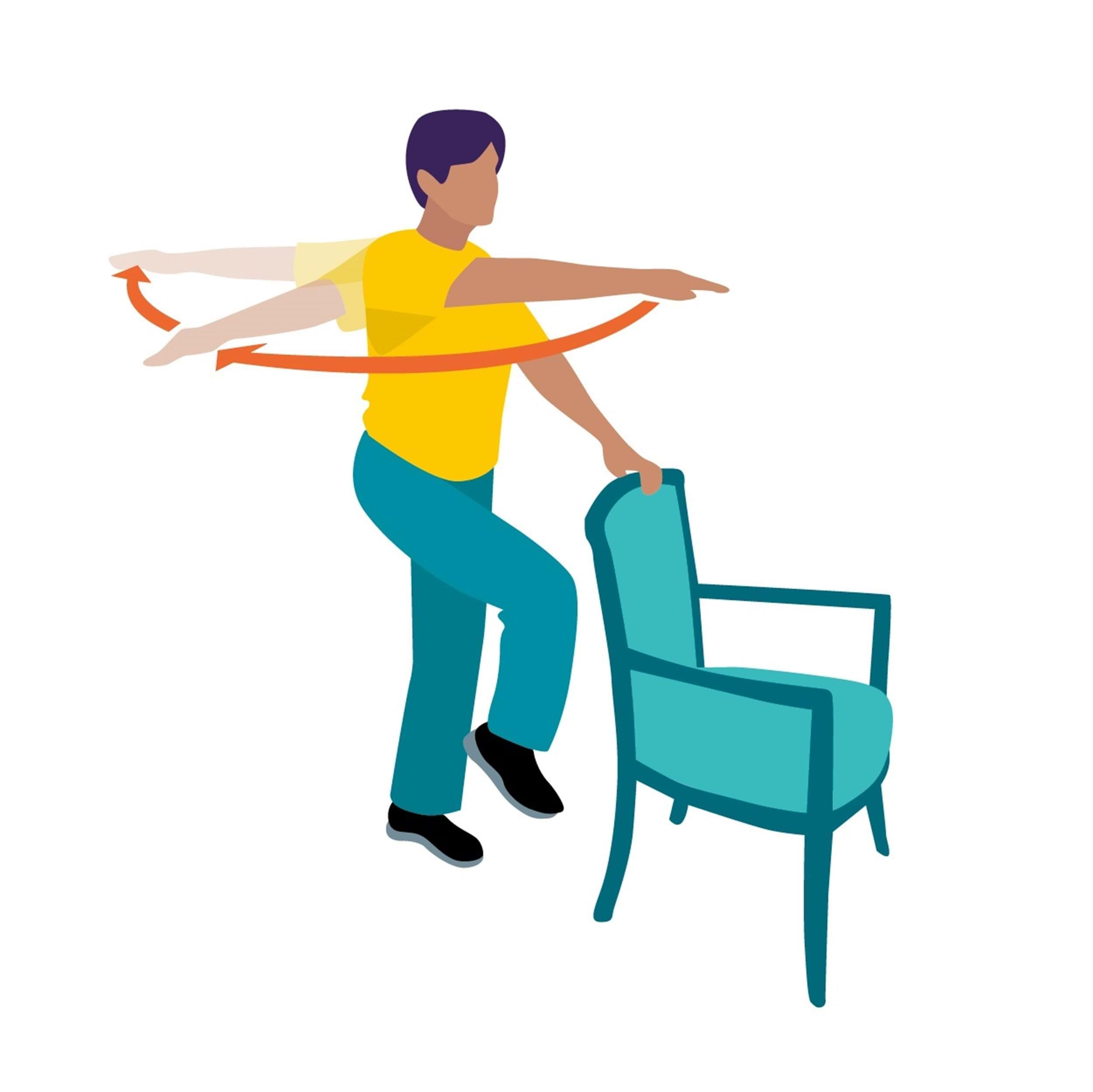
- Stand upright next to a chair, countertop, or another stable object that you can hold onto.
- Holding onto the surface with your right hand, lift your left foot off the ground.
- While your foot is off the ground, extend your left arm so that it reaches towards 12 o'clock.
- Slowly move your arm horizontally so that it points to 9 o'clock then 6 o'clock, before moving back round. Keep your foot off the ground throughout.
- Put down your arm and leg and repeat on the other side. Your right arm will point to 3 o'clock rather than 9.
- Start with 3 reps per side and work your way up to 5. You can slow down the movement to make this more challenging.
3. Staggered Stance
This is a great exercise to specifically help improve balance when walking.
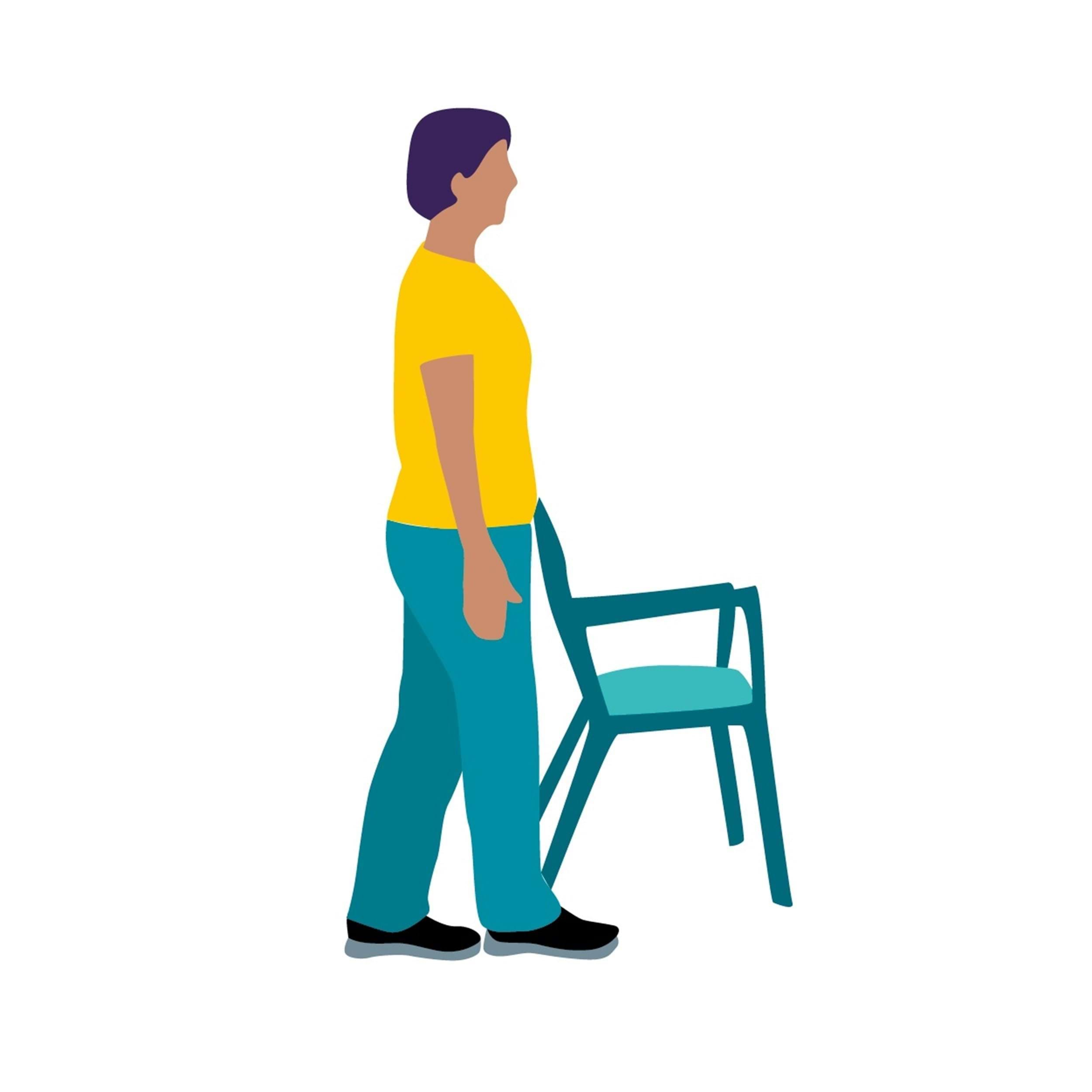
- Set up near an object you can hold onto, such as a chair or worktop.
- Place a piece of tape, string, or something similar, on the ground to act as a centre line.
- Stand on your 'line' with your feet together, hands by your sides, and chin and chest up.
- Step forward, placing your right foot on the line so it is directly in front of your left foot.
- Hold this position for 10 seconds, making sure to balance evenly over both feet.
- Return your right foot to your starting position and repeat with the left foot.
- Start with 3 reps of 10 seconds each side and build the time up to 30 seconds.
4. Knee Marching
As well as helping to improve balance, knee marches can build muscle strength in the ankles, hips, and legs. The slower you do the exercise, the more challenging it is, so you can increase the difficulty each week by slowing down.
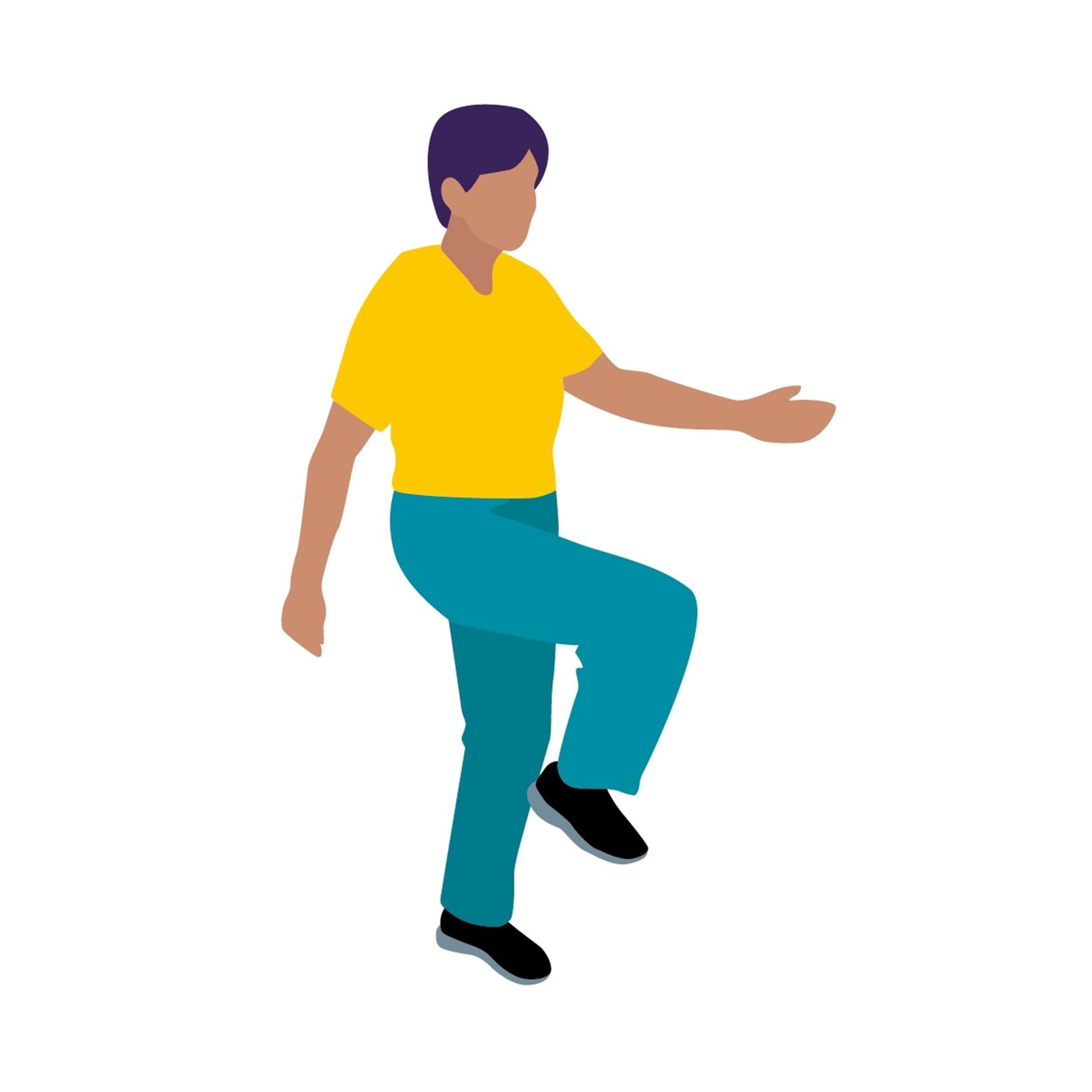
- Stand facing forward with your feet together and arms at your sides.
- Raise one knee up as high as feels comfortable and then lower it down. As you bring the knee up, shift your weight onto the other leg.
- Repeat on the other side, as if you were marching.
- Repeat 10 times per leg for best results, or up to 2 minutes straight if you feel up to it.
5. Side Leg Raise
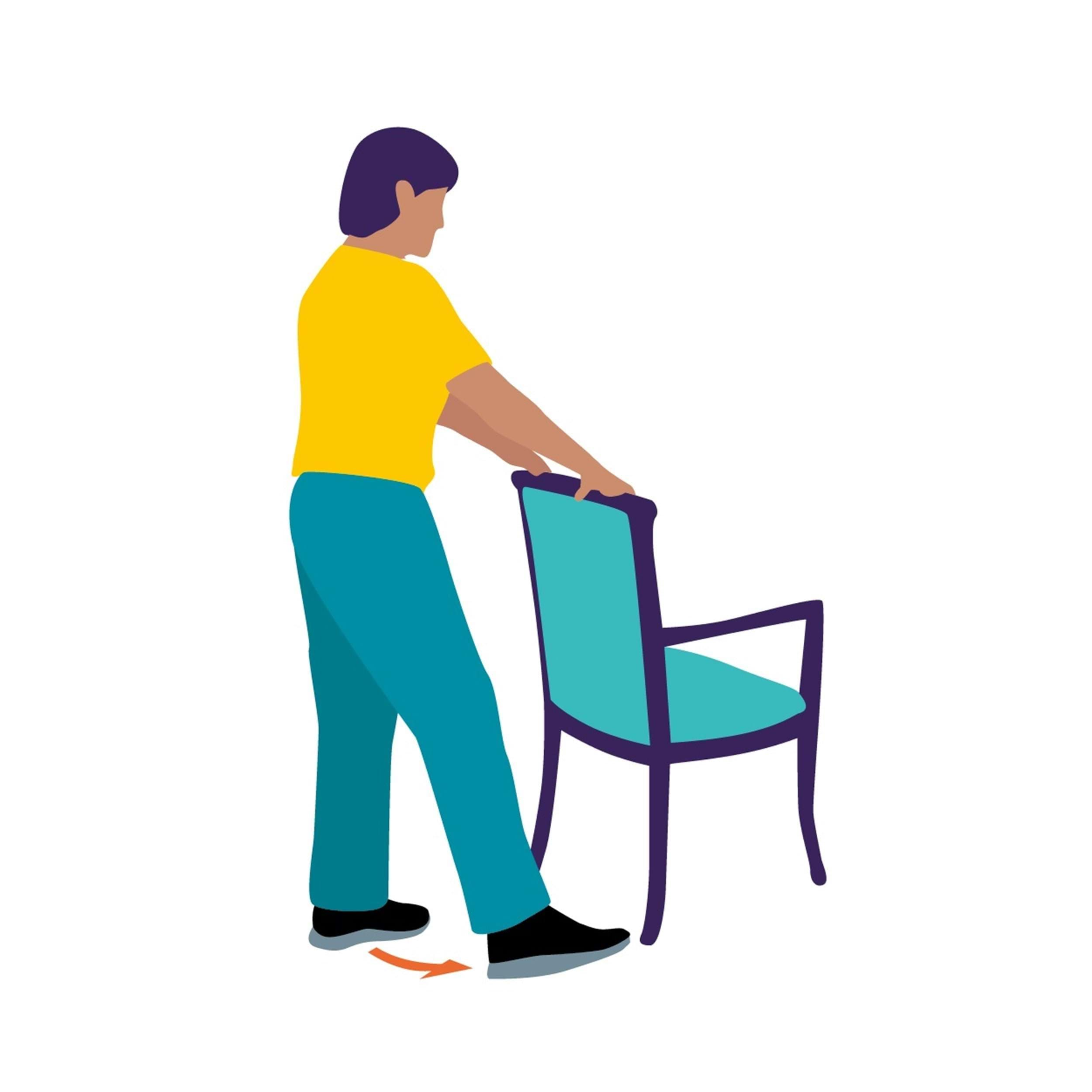
- Stand behind a chair or other object you can hold onto with your feet slightly apart.
- Slowly lift your left leg to the side, making sure to keep your toes facing forward. Your back should remain straight and you should be looking straight ahead.
- Hold your leg up for 10 seconds before slowly lowering back to the floor.
- Repeat on the other side.
- Start with 3 reps of 10 second holds, increasing up to 30 seconds each rep.
Personal Trainer Marina has also demonstrated some more intermediate balance exercises, so if you find the above too easy, give the below a try. In addition to improving balance, these will help to improve ankle mobility and walking gait. Start with 20 seconds per exercise and slowly work your way to to 1 minute each.
In addition to balance exercises, elderly people will benefit from adding low impact cardio resistance training to improve their health -- we have a guide to simple exercises for older adults here, as well as a guide to seated exercises for seniors here.
We have a wide selection of home workouts to help, or you can join one of our 300+ gyms and use the equipment like 70 year old PureGym member Sue!

